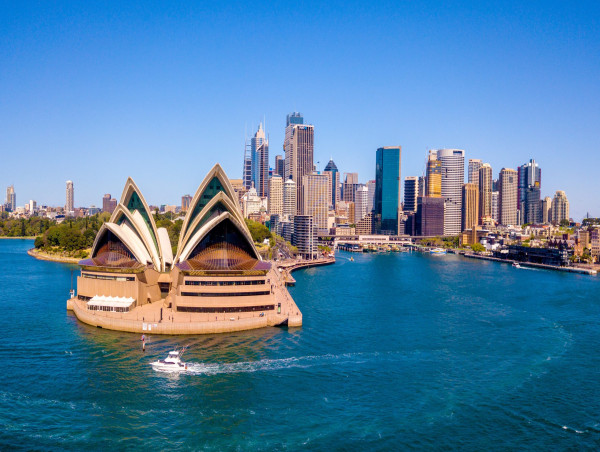Australia’s economy showed signs of persistent weakness in the second quarter of 2024, with gross domestic product (GDP) growing by just 0.2% from the previous quarter.
This growth rate matched economists’ expectations but was insufficient to reverse the slowdown seen in recent months.
Year-on-year growth decelerated to 1%, marking the weakest annual pace since the early 1990s recession, excluding the impacts of the Covid-19 pandemic.
This continues a trend of weakening economic performance that has been evident throughout 2024.
The modest quarterly growth was largely driven by government spending, which increased by 1.4%, particularly in health services.
However, this was not enough to offset the broader economic challenges faced by consumers and businesses.
The slow growth trajectory suggests that Australia’s economic conditions remain fragile, with consumers holding back on spending in the face of high borrowing costs and persistent inflationary pressures.
Also Read: Here’s why ANZ, CBA, NAB, and Westpac share prices are surging
GDP growth slows to 1% annually
Australia’s annual GDP growth fell to 1% in the second quarter, down from an upwardly revised 1.3% in the first quarter.
This slowdown reflects a broader pattern of weak economic performance, driven by high interest rates and sluggish productivity growth.
The current pace of economic expansion is notably below the decade average of 2.4%, underscoring the ongoing challenges facing the Australian economy.
The Reserve Bank of Australia (RBA) has maintained a restrictive monetary policy to combat inflation, with the cash rate currently at a 12-year high of 4.35%.
Despite these efforts, inflation has proven to be “stickier” than in other countries, such as the United States, complicating the RBA’s task.
Governor Michele Bullock has indicated that it is too early to consider easing monetary policy, a sentiment echoed by her deputy, Andrew Hauser.
Household spending and productivity decline
Consumer behavior has been a significant factor in Australia’s economic slowdown. Household spending fell by 0.2% in the second quarter, which detracted 0.1 percentage points from GDP growth.
The decline was particularly pronounced in transport services, including reduced air travel, which experienced its first fall since September 2021.
The household savings ratio remained at 0.6%, significantly down from its peak of 24.1% in June 2020, reflecting the diminished financial cushion available to Australian households.
Productivity growth has also been a concern, with GDP per hour worked declining further in the second quarter.
This ongoing trend poses a challenge for policymakers, as productivity growth is essential for improving living standards and enabling sustainable wage increases.
Andrew Canobi, a fixed-income director at Franklin Templeton, noted that Australia’s “weak productivity” and “high cost malaise” are likely to result in sustained high interest rates.
Also Read: Australia’s ASX 200 index rallies as big banks and miners diverge
Government spending rises
Government spending was a bright spot in the GDP report, contributing 0.3 percentage points to GDP growth. This increase was driven by investments in health services and other public programs.
However, despite this boost, overall economic growth remained subdued. The rise in government expenditure was insufficient to counterbalance the declines in other sectors, particularly consumer spending.
Looking ahead, economists anticipate that the RBA may begin cutting interest rates in February 2025, although any easing is expected to be modest.
In contrast, other central banks, including the Federal Reserve, the European Central Bank, and those in New Zealand and the UK, are already on a path of easing monetary policy.
Bloomberg Economics’ James McIntyre has projected that growth will continue to be sluggish, with per-capita GDP likely to contract further in the latter half of 2024.
Economic data shows mixed signals
Wednesday’s data provided a mixed picture of the Australian economy.
While services exports rose by 5.6%, driven by increased spending on education-related travel services, per capita GDP fell for the sixth consecutive quarter, declining by 0.4%.
Gross disposable income increased by 0.9%, outpacing the 0.7% rise in nominal household spending. However, higher household earnings were partially offset by increased income taxes and mortgage payments.
Treasurer Jim Chalmers described the growth data as “really soft,” attributing it to global economic uncertainties, higher interest rates, and persistent but moderating inflation.
The outlook remains uncertain, with economic recovery expected to be gradual and dependent on both domestic and international economic conditions.
The post Australia’s economy remains sluggish as consumer spending declines appeared first on Invezz


